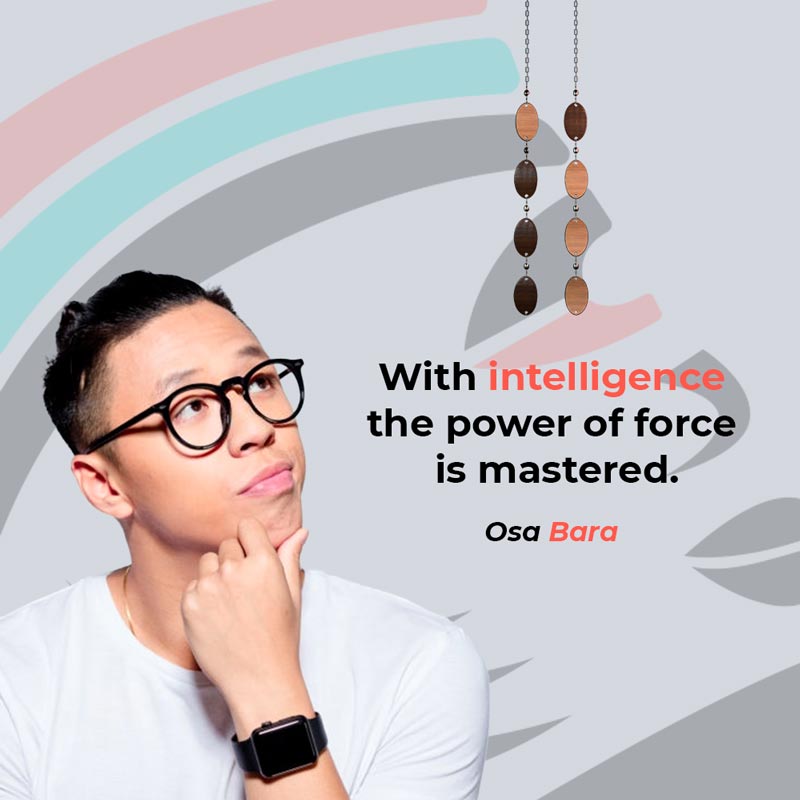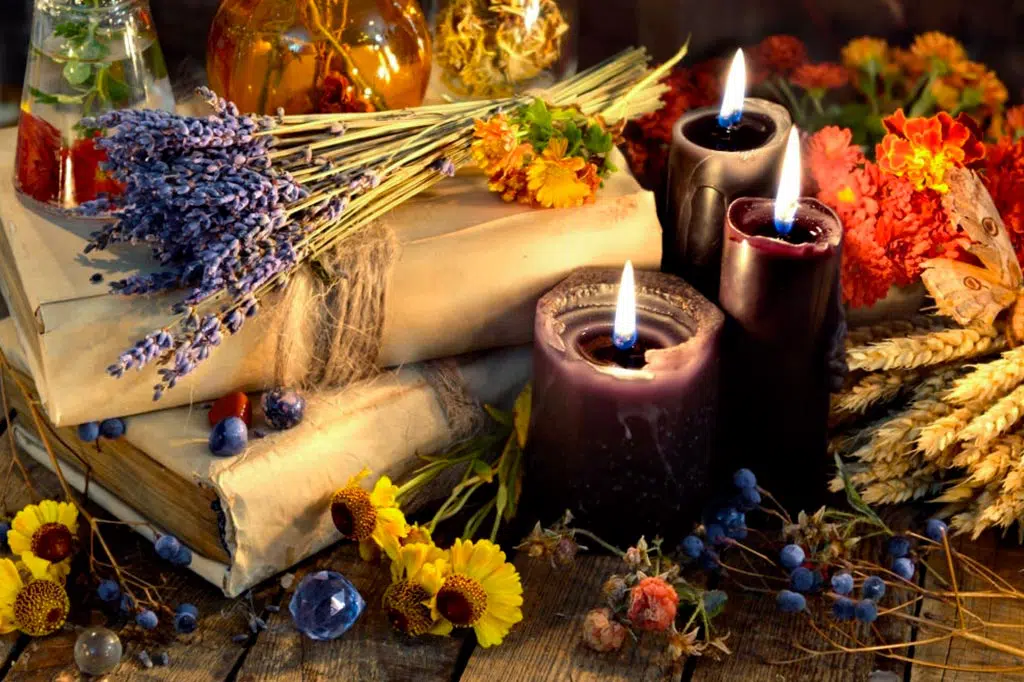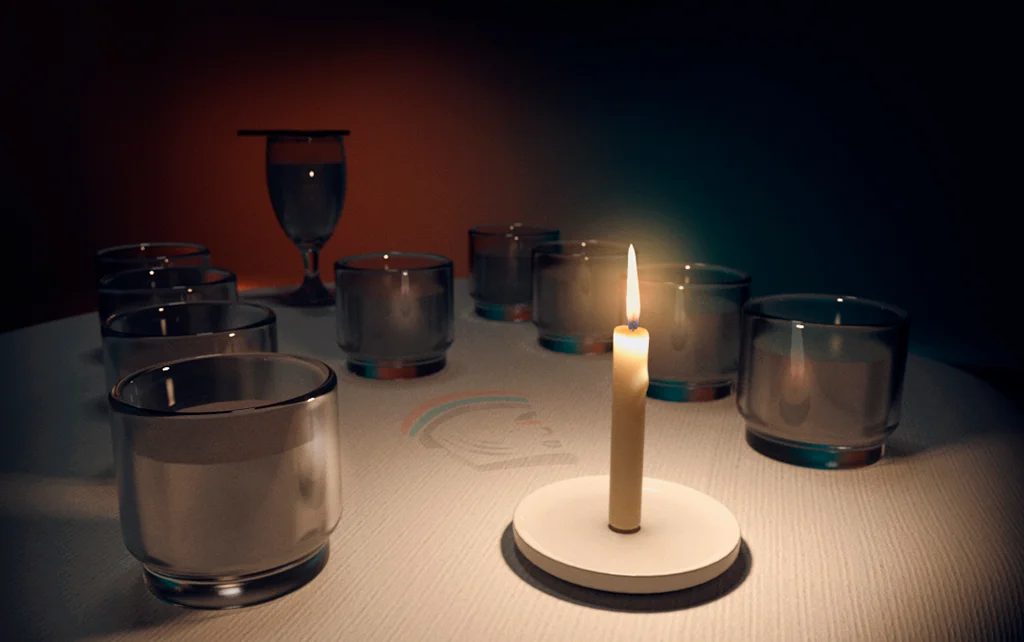Eggun or Egungun: The spirit of the ancestors

The cult of Eggun, that is, attention to the spirit of the deceased, is a very old practice that came to America through African slaves from the nations belonging to the ancient Yorùbá Empire. In fact, their societies centered their religious practices fundamentally on respect and reverence for their ancestors. That is why such customs are one of the pillars of the rule of Afro-Caribbean Osha and Ifa, where it has been established that care for the dead is as important as that of the Orishas.
Who are the Eggun?
The term Eggun refers to the spirits belonging to deceased ancestors or ancestors. Most of the Eggun are spirits that in life had some kind of religious consecration or foundation. In the Yoruba religion, the dead have a fundamental role, they are even honored before the Orishas. The souls of the ancestors have a sacred character.
It should be noted that when speaking of ancestors, reference is not only made to deceased relatives, it also refers to older iworos (santeros and babalawos) who have died, whose spirituality continues to be revered, and who become intermediaries between the alive and the Orishas, since, finally, they move between the earthly plane and the spiritual plane.
How do they manifest?

The Eggun can manifest in many ways. But, it is possible to clearly identify their messages through the oracles of Ifa or Meridiloggun (snail) or through spiritual research masses where they communicate using a medium.
Eggun types
According to the culture of Osha and Ifa, within the spiritual plane there are several types of Eggun, among them we have:
- Aronu: they are spirits whose level of elevation is very high and of a lot of light.
- Eggun shebo: they are spiritualities in charge of protecting a person from the moment of their birth, or that they become attached for some reason during life, maintaining the same mission, for example: by sympathy, by pacts, by friendship or by familiarity, among other causes. Its influence is usually positive.
- Egun ori: this is the spirit that guides people's thinking. It is the spiritual guide or leader of the rest of the protective spirits belonging to the spiritual guide box.
- Eggun ara: they are those who have a blood family relationship with people, whose bond is maintained beyond death.
- Epin: is a family spirit (consanguineous) that acts leading the rest of the family spirits.
- Eggun ore: they are spirits of the dead that we met at some point in life and can make a presence at specific times.
- Egun awo: these are the known or unknown spirits, who in life were consecrated to Ifa, and who appear in some circumstance. Also, they are invoked through the moyuba.
- Eggun merinlaye: known as the spirits of the 4 cardinal points.
- Egun ni inle: they are those who reside inside the house. They can exercise protective tasks or be disturbing.
- Eggun buruku or burubuku: they are the malevolent, disturbing spirits, usually sent.
- Igondo: these are protective spirits that are backward and require help through spiritual care to reach their elevation.
Why is Eggun worshipped?
There is a very popular saying in the rule of Osha and Ifá that says: «Ikú lobbi Osha» its literal translation says: from death the Orisha is born. Although, it is popularly interpreted as: "The dead gave birth to the saint". The concept of death in Yoruba culture is quite deep and relevant to their practices. The human being is considered to be made up of three elements:
- The Emí: which is the spirit. He lives inside the Ará, but separated from the Orí. It is the one that generates our internal dialogue, and stores the memories of this life. When we incorporate or mount the Orisha, the Emí is placed to one side of our consciousness coming out of the Ará, to allow the incorporation of that spirituality.
- The Orí: which is the soul. It is the one that stores the learning and wisdom of other incarnations. It is usually closed to the consciousness of the individual until his death. During the consecration of kariosha (initiation into santeria) ceremonies are performed that represent the opening of Orí to other knowledge. It is located within the Ará, in the area near the pituitary gland.
- The Ará: it is the physical body of each individual.
at the time of death, Emí and Orí merge becoming one and leaving the Ará, which from that moment on is transfigured into “Okú” (dead body). That transformed spirituality, being a single energy, will now await the destiny that corresponds to it, it can return to Aiyé (earth) experiencing Atùnwá (reincarnation); he can become Eggun (dead) or Aragbá Orún (on the way to Orún), which will later allow him to reach the state of Arà Orún (heaven) becoming an inhabitant of Orún.
Female Eggun Cult Societies
In the Yoruba culture, the female Eggun cult is known as: Iyamí Agbá, translated as: my great mother. It is a cult that is performed in honor of female spiritualities collectively, not individually. In the Geledé society, for example, the adoration towards the female Eggun is carried out through the cult of Iyami Oxorongá, also called Iyá Nlá (the mother who is beyond). This society is made up solely of women, and only they are aware of its immense power. This practice did not arrive, nor did it become popular on the island of Cuba.
Male Eggun Cult Societies
The traditional societies in honor of the male (not individual) Eggun of the Yoruba culture were not popularized in the original way in Cuba. The closest thing to their original practices comes from the Gold Secret Society, belonging to the Geledé, which consists of a cult that has a deity who acts as the Eggun's foreman known as "Gold" and who represents power over male spirits. . The practice of this cult has been considerably lost in Africa, and its beliefs were not spread in America. However, its importance became such that it was said that it helped to control the immense power attributed to the Iyami Oxorongá.
What is the cult of Egungún?

The Eggungún Societies is a cult of the Eggun individually. It is about the adoration of the deceased who in life acted in an outstanding way within the religious or family sphere. It should be noted that this practice is based on attention to the male dead, since it considers that the female ones do not manifest themselves. Within their rituals, they usually wear large costumes made with colored fabrics that cover the officiants from head to toe, who have the outstanding function of lending their bodies to be used by the Egun to dance during their festivals, then to fall into a trance
In some cities, the worshipers and priests of Egungún form lodges or associations, within which they prepare themselves, and the ceremonies that attend the attention, worship and annual traditions of Egun. In each association there is a boss. Within these lodges, there may be a very large number of followers, but as coordinator there is always a chief, who is the one in charge. Other chiefs serve as support from other villages or towns, even with their own personal titles such as: Egungún Ajolojo, Ajofoyinbo, Ayé, Egungún Oyá.
You can read: What are mediums?
How are the Eggun cared for?

First of all, it is necessary to take into account that the place where the Eggun are cared for is a place specially selected and conditioned for it. It is there, where a special connection is established with those spiritualities that have left this earthly plane, but continue to play an important part in our lives.
An element that is usually basic to place assistance to the deceased is the Eggun tile or the tile of the dead, which is a foundation made and consecrated by the Babalawos to promote the connection with the deceased. In addition, a Deity whose function is to establish that connection is "Orun", who can also be found in the places that are established for the care of the Eggun, however, if present, the care can only be performed and directed by men, since their cult is strictly masculine.
Normally, the corner where the Eggun are cared for is usually closed by a crescent with 9 lines, which is painted on the ground with shell, which delimits the space where the energy of the Dead will be propitiated. Also, it is customary to locate their space outside the house, in the patio, next to the pipe, or in especially open places, and removed from the basket where the pots or tureens of the Orishas are located.
At the time of giving the offerings, they are usually placed on the floor and within the line of husk indicated above. It is customary to begin with a prayer of invocation to the dead (moyugba) where they are asked to attend the call that is being made to them, they are asked for their blessing and they are informed of what is being offered to them.
The attention to the ancestors is done before attending to the Orishas, and can be done when desired or when an oracle determines it.
You can read: All about the spirit vault
What are the offerings that are placed on the Eggun?

Usually it is customary to carry out the Eggun services on Mondays, however, this does not constitute an obligation to carry out their services, since they can be provided any day of the week. The dead are cared for through the sacrifice of various elements such as:
- Candles
- Food and sweets.
- Fresh water.
- Alcoholic beverages, especially brandy and dry wine.
- Café.
- Tobacco.
- Husk
- Sugar water.
- Flowers.
- 9 pieces of coconut, which are prepared with a drop of corojo oil and a guinea pepper, forming a circle on a white plate.
What do they eat?
There are various types of ceremonies in which Eggun is fed, all of them officialized by babaloshas (santeros) and babalawos, in which he is fed animals such as: rams, rams, roosters, pigeons, hens, chickens, jutias, turtles, among others.
Benefits of caring for the Eggun
The philosophical principles of Santeria guide us to maintain a constant faith in the connection with the spirituality of our ancestors. In addition, all the allegories or attentions that are made in their name are a kind of reward offered to them for their good deeds in this world. Initially, they constitute an energetic and spiritual benefit for our Eggun, which helps them to transcend and prosper within the spiritual plane.
Likewise, the dead can help us establish a balance between the earthly world and the spiritual world; they are able to establish a guide that helps us connect with our destiny, and protect us against various adversities.
What is the Pagugu or Eggun stick?

The Pagugu or dead stick, is a cane or cuje that usually measures one meter in length, approximately. It is a fundamental tool to promote a connection with the deceased. It is defined as Eggun's staff on earth, through which we can carry out commands or calls on his behalf. It is commonly used at the time of moyugbar (pray) to invoke the dead, or while chanting in their honor. The pagugu has a hole in the upper part where a sacred load is placed that contributes to the function it performs.
All practitioners of the rule of Osha and Ifa, regardless of their gender, can own their own ceremonial staff. All rituals related to the Eggun must be accompanied with their staff.
I pray to light the candles to the Dead (Eggun)
itana lau lau,
eggun fumi lau lau
itana lau lau,
eggun fumi lau lau
itana keke
egun fumi keke
itana keke
Egun fumi keke.
Oshe bile to Eggun
Obi yeku yeku eggun awalorum mayabife obi eya orun mayebi obi tiwa mayebi umbati umbakun olorun obi la fibiku eggun okana yureo odima dima ona kodima okana yurco eggun okuo olorun obibi eggun odara biaye.
Oriki or I pray to Egungun
Awa náá ni njé dede, Egún ni njé dede, awa náá ni njé dede.
(We are faithful followers of the wise advice of our Ancestors.)
Egún ni n jé dede, awa náá ni n jé dede, Okuúnkún – bojú – ópópó ni n jé dede.
(We praise the magnificence of our Ancestors. And the magnificence they bring us from heaven.)
Awa naá ni n je dede. Ojo - kún - ló - ló - falé, ni n jé dede.
(The love of our Ancestors covers the Earth like flood water.)
Awa náá ni n jé dede, awa náá ni n jé dede. I did.
(And they make us better every day. So.)
Oro a Eggun (Songs and honors the dead)
A nbá wá o rí (2 times)
We are meeting to look for it, to find it.
A wá or sùn. A wa o maa
We come, he's asleep. We continually search for it.
L'erí or máa lékè awo
In the head he will always be the highest initiate.
Ará òrun ká'we
The heavenly bodies collect the children.
Omo lò owó dale fiyèdénú a kún ofà o; to kún ofà or (2 times)
Child who cries for the money lost from a torn garment is patient, we fill the garment; we fill the garment.
Ilè mo pè o (2 times)
Egungun or.
From mother earth I invoke you
To you Egungun.
Alàgba 'lágbà kò nfé soró
The honorable superior. Chief of Egúngún does not want sadness.
Kó nfé soró àbúrò mi
He doesn't want sadness from my young brothers.
Alàgba 'lágbà kò fé sòro, ko fe sòro, kò fé sòro.
The very honorable superior doesn't want to talk, doesn't want to talk, doesn't want to talk.
Agò ajèjé t'orí le jó
The shroud with the things of the deceased hunter Dances on a strong head
Òkooro rere o mo lóòya
A good end for a transplanted child to pay.
T'orí jó ókooro rere
In a strong head a good ending is danced.
Àsà ra. Ìrà wò t'orí le jó
The custom is to perish.
Get to take care of the strong head that dances.
Òkooro rere layé or
A good ending in life.


I like to attend to the eggun, I am initiated into the osha rule, I have warriors, olokun and the hand of orula, I am interested in learning to pull the eggun and develop my spiritual square.